The technology timeline for kids and teens is far from straightforward. Not every 7-year-old / 10-year-old / 15-year-old uses the same technologies – it depends on things like how mature they are, what their parents’ views are and what devices they have access to at home, at school and at their friends’ houses.
We’ve started with an ‘essentials’ checklist for parents of children of any age, which highlights the actions you could take for your whole family. Then we have suggestions for parents with children of different ages. These are by no means definitive lists (the tech world moves far too quickly to be able to promise that!) but they’re a good starting point. We hope you find them useful.
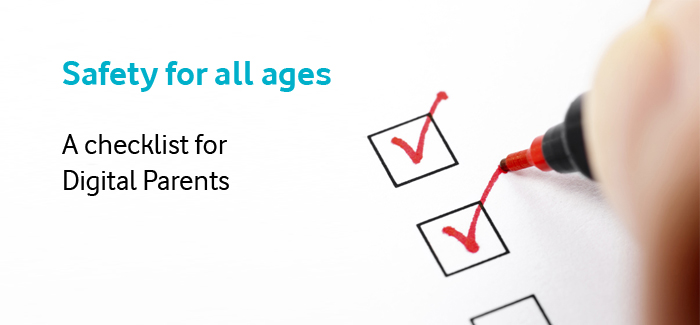
THINK about how you guide your family in the real world and do the same in the digital world – don’t be afraid to set boundaries and rules for your child from a young age
HAVE a go at some of the technologies your son or daughter enjoys – play on the Wii together or ask them to help set you up on Facebook if you’re not already a member
TALK to your friends, family and other parents about how they help their children to manage their digital world – you might pick up some interesting tips
WORK together with everyone involved in caring for and supervising your child – other family members, nannies, and even the driver
MAKE the most of tools like Parental Controls on computers, mobile phones and games consoles, privacy features on social networking sites, and safety options on Google and other search engines
TRY not to use technology as a babysitter too often – we all do it sometimes but it’s important to know what your child is doing
MAKE digital issues part of everyday conversation – show your child that you understand how important technology is to them and talk about all its amazing benefits, but don’t shy away from difficult subjects like responsible online behaviour, bullying and inappropriate content
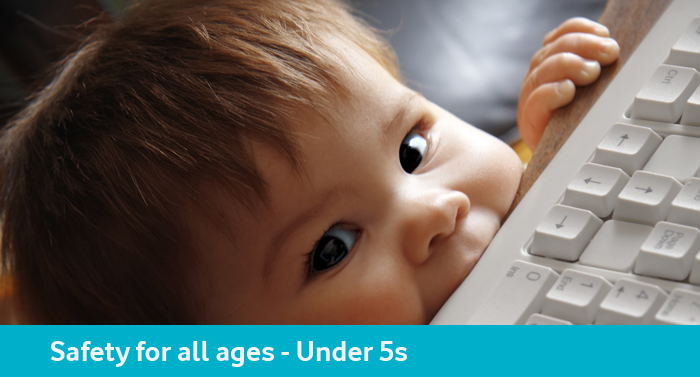
START setting some boundaries now – it’s never too early to do things like set limits for the amount of time they can spend on the computer
KEEP devices like your smartphone out of reach and make sure you have passwords/PINs set up on them for the times you might lend them to your child... or for when they simply get hold of them themselves!
CHECK the age ratings and descriptions on apps, games, online TV and films before downloading them and allowing your son or daughter to play with or watch them
EXPLAIN your technology rules to grandparents, babysitters and the parents of your child’s friends so that they also stick to them when they’re looking after your child
REMEMBER that public wifi (e.g. in cafés) might not have parental controls on it – so, if you hand over your iPad to your child while you’re having a coffee, they might be able to access more than you bargained for
SET the homepage on your family computer or tablet to an appropriate website
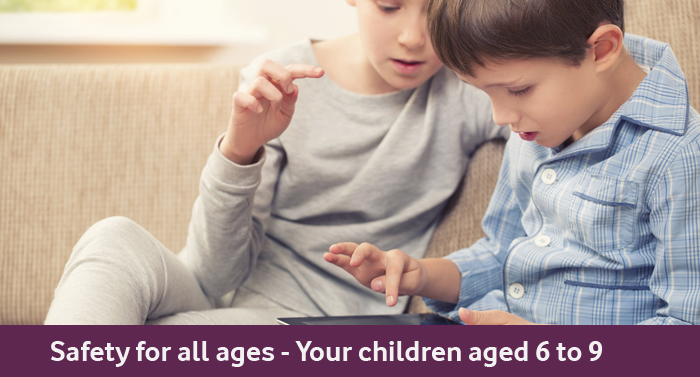
CREATE a user account for your child on the family computer with appropriate settings and make the most of Parental Controls and tools like Google SafeSearch
AGREE a list of websites they’re allowed to visit and the kind of personal information they shouldn’t reveal about themselves online (like the name of their school or their home address)
DECIDE time limits for things like using the internet and playing on games consoles
BEAR in mind what older siblings might be showing them on the internet, mobiles, games consoles and other devices and agree some rules as a whole family
TALK to other parents about their views on things like what age to buy kids a mobile and don’t be pressured by your child into letting them use certain technologies if you don’t think they’re old enough or mature enough... no matter how much they pester you!
FAMILIARISE yourself with age ratings and descriptions on games, online TV, films and apps, so that you can be sure your child is only accessing age-appropriate content
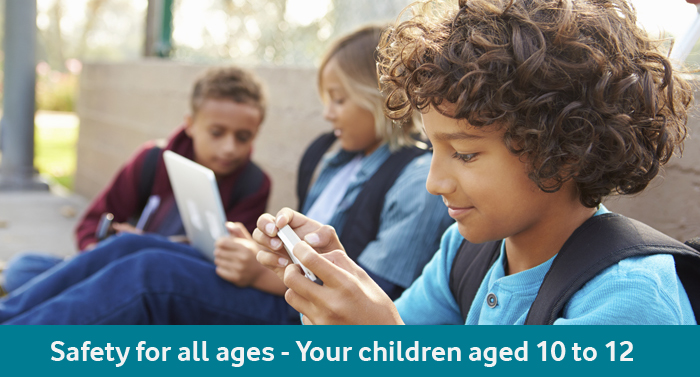
MAKE sure you’ve set some tech boundaries before they get their first mobile or games console – once they have it in their hands, it can be more difficult to change the way they use it
REMIND your child to keep phones and other devices well hidden when they’re out and about to minimise the risk of theft
TALK to them about what they post and share online – written comments, photos and videos all form part of their ‘digital footprint’ and could be seen by anyone and available on the Web forever
DISCUSS the kind of things they see online and how it makes them feel about themselves – this is the age when they will be thinking a lot about their bodies and their self-image is being formed
HOLD the line on letting your son or daughter sign up for services like Snapchat and YouTube that have a minimum age limit of 13 – talk to other parents and their school to make sure everyone is on the same page
REMIND them that they shouldn’t do anything online that they wouldn’t do face-to-face
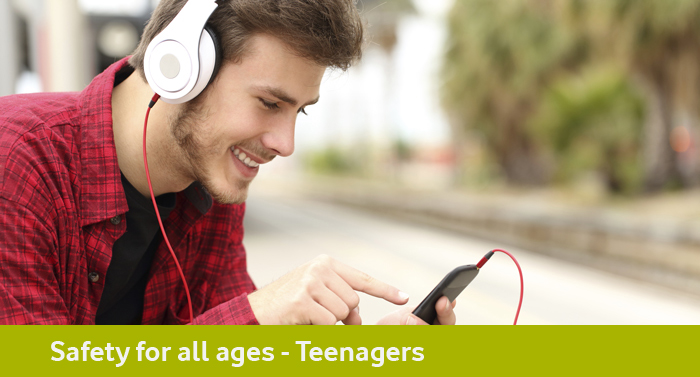
DON’T think it’s too late to reinforce boundaries or teach your child anything about the digital world – they might think they know everything but they still need your wisdom and guidance
TALK to them about how they might be exploring issues related to their health, wellbeing and body image online – they might come across inaccurate or dangerous information on the web at a vulnerable time
DISCUSS how they behave towards others and what they post online and don’t shy away from difficult conversations about things like inappropriate content and grooming
GIVE your son or daughter control of their own budget for things like apps and music, but make sure you have agreed boundaries so that they manage their money responsibly
DISCUSS things like downloading and plagiarism so that they understand what’s legal and what’s not
ADJUST the settings on Parental Controls in line with your son or daughter’s age and maturity – if they ask you to turn them off completely, think carefully before you do and agree in advance what is acceptable online behaviour